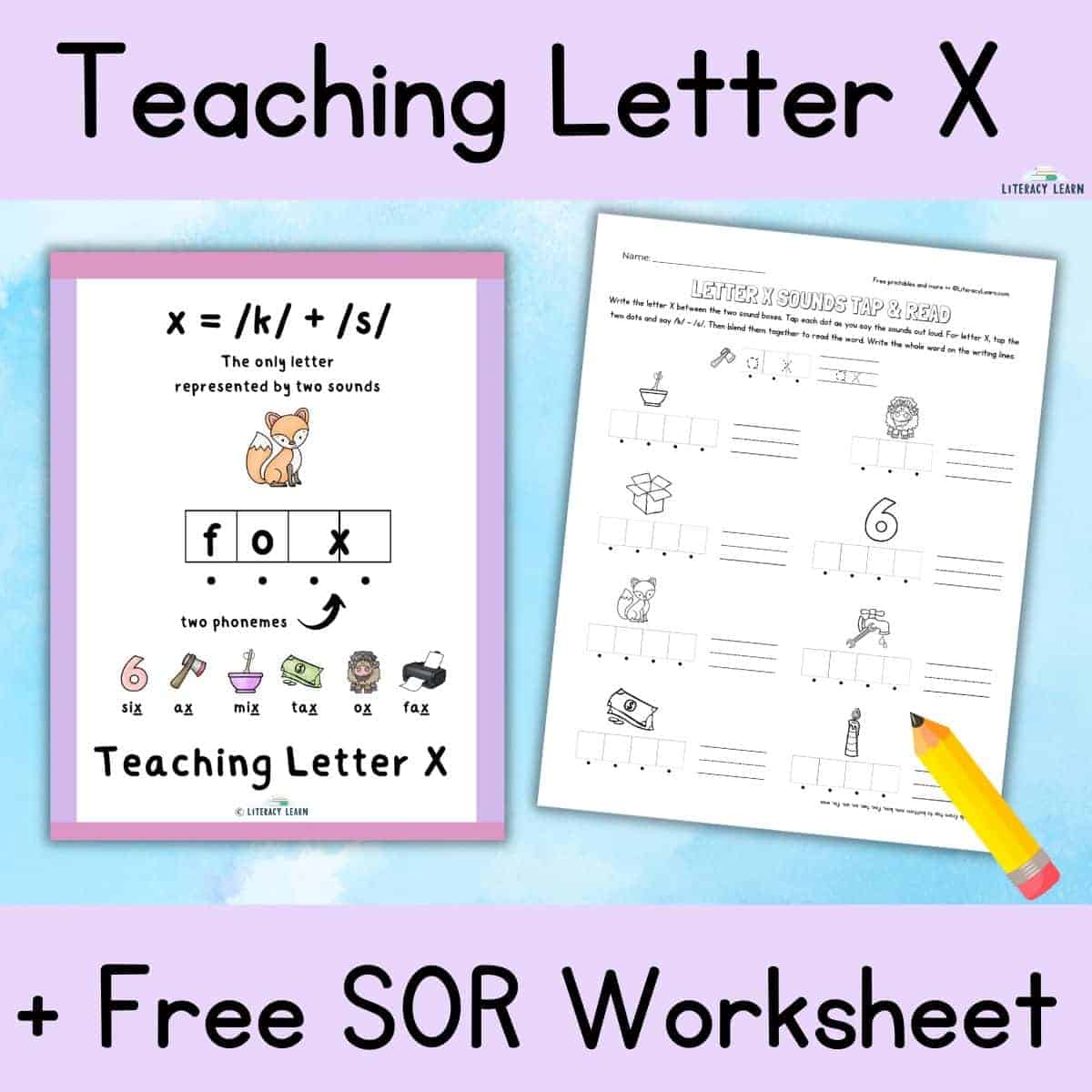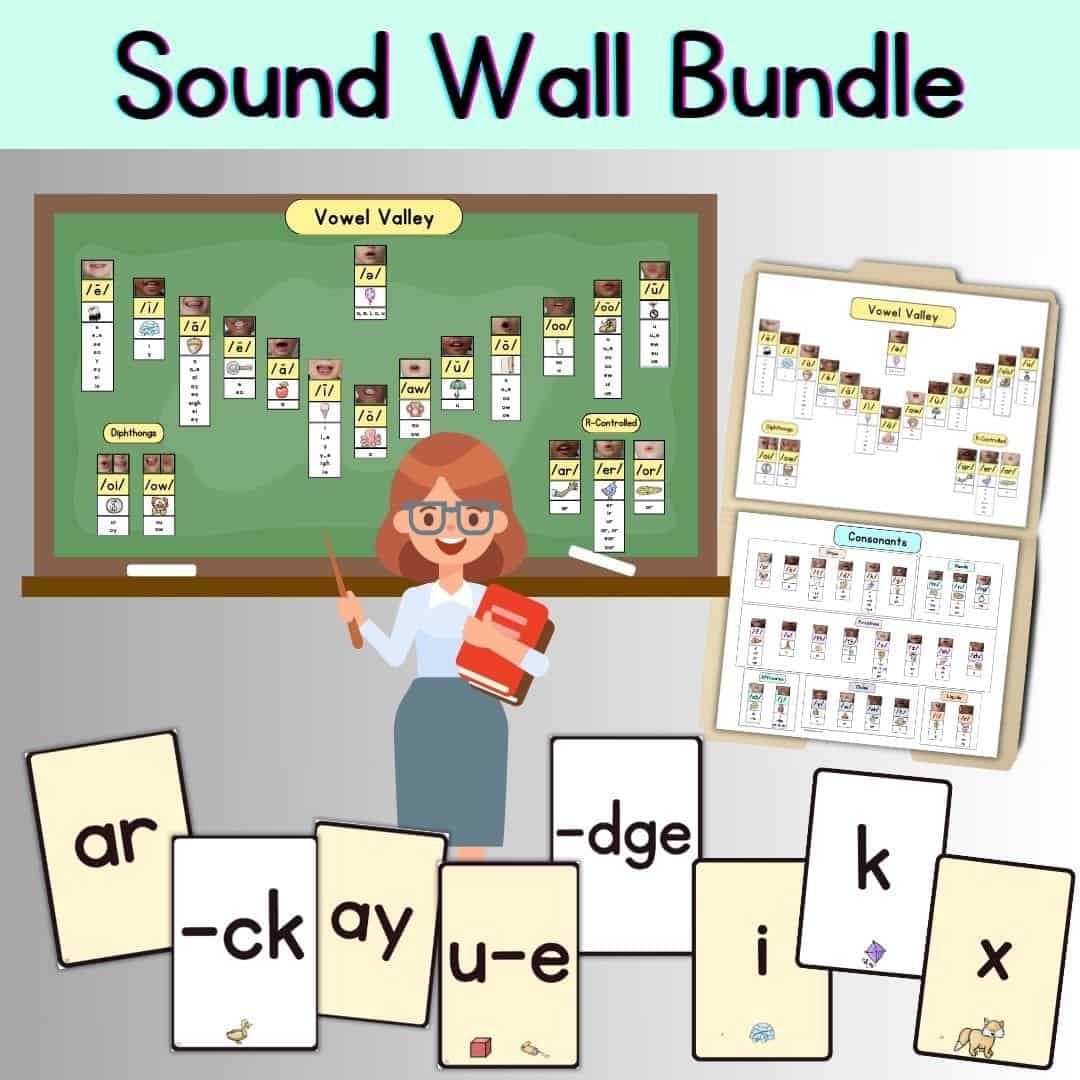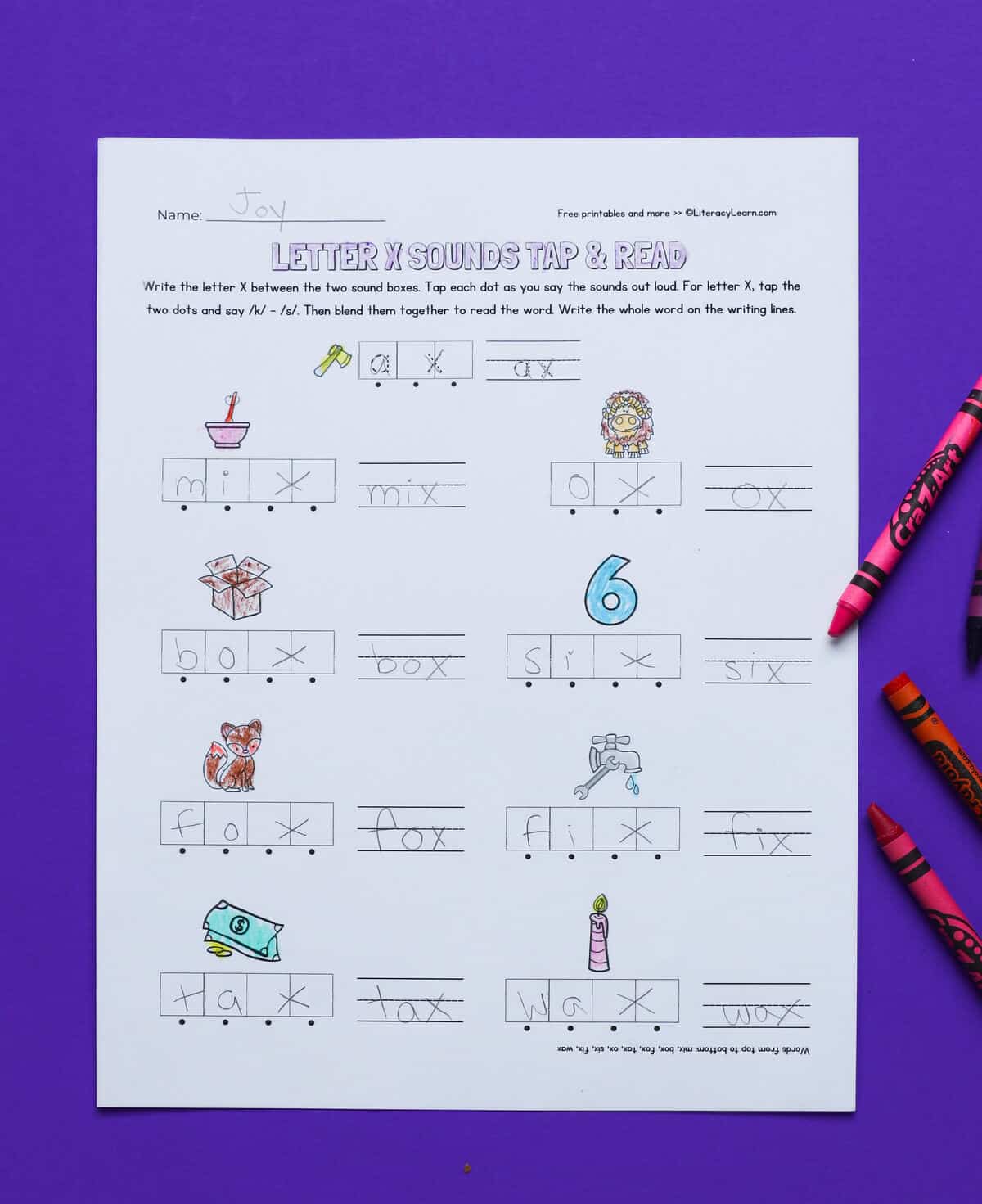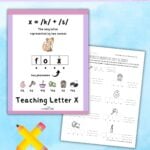A Better Way to Teach Letter X: Free Worksheet
This post may contain affiliate links. As an Amazon affiliate, we earn from qualifying purchases. See our disclosure policy.
Learn the Science of Reading-aligned way to teach the letter X to your students. Gain confidence in teaching your students all about the unique letter X and get a free printable orthographic mapping worksheet for student practice.

🤔 Rethinking How to Teach X
As teachers, we begin explicit phonics instruction by introducing letters and linking each letter to its most common sound.
For example, we start off teaching all young students that letter C represents the /k/ sound. It isn’t until students have mastered reading and spelling words with C that we introduce the less common sounds of C (e.g. the soft sound of C = /s/).
We need to adopt the same mindset when teaching the letter X!
So often, alphabet charts include the keyword ‘Xylophone’ for the letter X. But in the word xylophone, the letter X represents the /z/ sound. This is an extremely rare sound only found in a few words of Greek origin, and frankly, young children don’t need to know it!
For a fun children’s book on this topic, check P is for Pterodactyl: The Worst Alphabet Book Ever.
Now back to the topic at hand! All educators should be teaching the most common sound of letter X, using keywords and memory hooks that include the most common sound.
✖ All About the Letter X
🤯 The letter X is incredibly unique, so get ready to have your mind blown! The most common sound of the letter X is actually 2 distinct sounds.
- /k/+/s/ are the two sounds that represent the letter X. It’s the only letter in the English alphabet that is made up of two distinct sounds!
- The /k/+/s/ sound of letter X never appears at the beginning of words; instead, it occurs in the middle or at the end of words.
When you say the two sounds quickly, you hear the /ks/ sound. But experts know that there is no one sound (phoneme) /ks/.
So /ks/ is actually a consonant blend! Together, these two phonemes /k/+/s/ represent the sounds of letter X.
When my students start to think of letter X as a single-grapheme consonant blend, just like any other consonant blend, things really start to click!

You can distinctly see the letter X and hear two sounds /k/ /s/ at the end of these words:
- fox
- box
- tax
- ox
- ax
- fix
- mix
- six
- relax
- suffix
- hoax
- complex
You can also see the letter X and hear the two sounds in the middle of words, particularly words with the prefix -ex.
- explain
- except
- exhale
- excite
- exchange
- expand
- exclude
- axle
- dexterity
This means, in a word like fox, you actually hear 4 sounds, even though we only see three letters. /f/+/o/+/k/+/s/ = fox.

👩🏻🏫 Teaching Tips
Here are some ideas and tips for teaching the Letter X and the two sounds that comprise it’s most common sound.
Remember, the consonant blend /k/+/s/ occurs in over 350 English words spelled with the letter X. It is the most common sound of the letter X.
🌟 Pre-k and Kindergarten Teachers: You get the privilege of setting the stage for future expert readers and spellers. At this level, the most important thing is that kids are firm in knowing X spells /ks/.
This will enable your students to read words accurately when they see an X and spell words accurately when they hear a /ks/.
🌟 1st Grade and Above: As kids progress, it will be important that they understand this expert information about the letter X. They’ll need to know that /ks/ is actually /k/ + /s/. For example, when you teach the doubling rule, kids won’t have to wonder why the X isn’t doubled in base words.
Have you ever thought about why the word ‘fox’ does not become ‘foxxes?’ Well, it’s because the word ‘fox’ doesn’t end in one consonant letter sound – because the letter X has two sounds! So that’s why it isn’t doubled. Just watch the lightbulbs go off! 💡
🌟 The sound /ks/ is not included on most sound walls, just like other consonant blends. However, if you teach preschool or kindergarten, it’s not a bad idea to include the /ks/ on your sound wall.
Since sound walls are used as a scaffold, kids just learning the letter names/sounds may need the sound wall support to independently and accurately spell words like ax, box, or fox.
🌟 When words ending with the letter X are plural or show third person plural, you add the suffix -es. Ax becomes axes and fox becomes foxes.

📄 Using the Free Worksheet
Download a free worksheet below to help students understand that the blend /k/+/s/ is represented by the one letter X.
We designed this worksheet using a print-to-speech format. Using elkonin boxes, students will match the sounds they hear (phonemes) to the letters that represent the sounds (graphemes). This process is called orthographic mapping.
- Step 1: Review the pictures with your students so they know the words they are spelling. Pictures from top to bottom are: mix, box, fox, tax, ox, six, fix, wax.
- Step 2: Students will spell the sounds they hear in the words, placing the X between the final two boxes. This will visually show them that the one letter X represents two distinct sounds – /k/ /s/.
- Step 3: Kids will tap the sounds, blending the sounds together to read the words.
- Step 4: Students rewrite the words on the rewrite line.
Related Resources for Teachers
🖨 Download & Print
DOWNLOAD TERMS: All of our resources and printables are designed for personal use only in homes and classrooms. Each teacher must download his or her own copy. To share with others, please use the social share links provided or distribute the link to the blog post so others can download their own copies. Please do not save our files to a shared drive, reproduce our resources on the web, or make photocopies for anyone besides your own students. Your support in this allows us to keep making free resources for everyone! Please see our Creative Credits page for information about the licensed clipart we use. If you have any questions or concerns regarding our terms, please email us. Thank you!
How do you teach the Letter X? We’d love to hear about your experience using this resource!
Please leave a comment below or tag us on Instagram @literacylearn!

